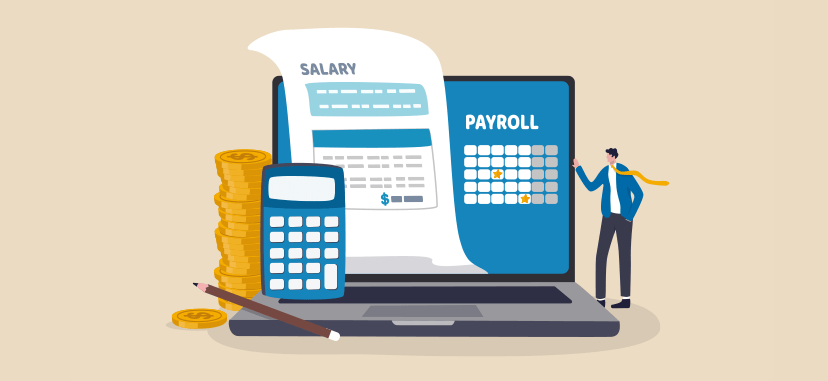
Click the button to start reading
The Wage Battle: Salary Versus Hourly Compensation
Whenever anyone seeks employment, one persistent question keeps raising its head. Is it better to be paid with a salary or hourly? It’s tempting to give a practical answer to this question, and say that a wage is a wage is a wage. But more often than not, our experience questions such a simple approach.
How many of us have been offered a job and negotiated a suitable compensation, only to realize six months into employment that it’s anything but suitable? Maybe you signed on to work forty hours a week, yet regularly work sixty. Or you need forty hours of pay each week, yet the boss consistently sends you home early when work is slow.
Each and every person seeking employment brings a unique mishmash of needs. They include things like short and long term financial goals, consistent work-life balance, and a desire to hone skills, establish professional connections, and be part of a meaningful initiative. Employers are no different. Some need a dedicated, long-term team, while others are looking for some people to pick up a few months of seasonal labor.
A wage is much more than a wad of cash you stick into your pocket at the end of the day. The various benefits of salary or hourly pay address these needs differently. A method of compensation directly impacts an employee’s level of dedication to a company, and the company’s dedication to him or her. It can mitigate against overwork and burnout.
Thinking through the pros and cons of hourly pay versus salary leaves both employees and employers scratching their head from time to time. Let’s consider the implications behind both these methods of pay, and in doing so uncover the benefits and downsides to each.

Clarifications: Salary, Hourly & Everything In-between
Hourly and salary are two of the most common methods that employers use to compensate employees.
The hourly method simply pays workers an agreed-upon rate for each hour of work completed. Someone who earns $10 an hour and who puts in a ten hour day earns $100. If this person takes a day off, he doesn’t receive any compensation. If he works overtime (above 40 hours in one week) he receives time and a half for each hour of overtime, or $15 an hour.
A salary is a fixed annual compensation given to an employee in exchange for labor or services. A salary, generally, is accompanied with benefits such as health care, a retirement plan and paid leave for vacation and personal time.
There are various shades of grey between these two black and white definitions. Oftentimes hourly employees receive benefits such as health insurance and paid leave. A salaried employee is generally contracted to work a designated number of hours each week. (However, a salaried employee does not earn more or less pay if her total weekly hours exceeds or falls below this designed amount.)
And there are plenty of other employment styles and methods for compensating employees. Both freelancers and consultants, generally, are paid hourly, but they aren’t employees of the company where they render services. Commission and profit sharing are methods of paying employees either a portion of their individual proceeds or the company’s proceeds as a whole.
With these clarifications, let’s turn to some of the pros and cons of salaried employees.

The Pros & Cons of Salary
For both the employee and employer, a salary offers a range of positives and negatives.
The Pros and Cons of Salaries for Employees
A salary, first and foremost, is great because it guarantees an employee a certain amount of money each year. This financial stability allows salaried employees to budget, spend, and invest to meet both long and short-term financial goals.
And a salaried compensation plan is much more than just cash. Its medley of perks and benefits provides health insurance, allows for paid vacation and personal leave, and pockets away savings for retirement. It covers and cares for an employee holistically.
Oftentimes, salaries offer a yearly bonus as well.
And unlike most hourly positions, a salaried employee isn’t expected to work diligently through the entire day. If there isn’t a lot of work at the moment, salaried employees can get away with fooling around on the job for a while.
On the other hand….
A salaried position creates an environment ripe for overwork without any acclaim or additional compensation. Take seasonal work, for example. During tax season, a salaried accountant may easily rack up 80 hour weeks, staring into spreadsheets until she can’t see straight. Or a teacher may spend the entire weekend grading exams at the end of a semester. Yet in both scenarios, the monthly paycheck is the same steady amount.
An employer invests in a salaried employee with the aspiration that he or she becomes proficient and skilled in the position. With time, then, a salaried employee often produces the same amount of work in fewer hours, with a higher quality of output. He becomes a ninja, essentially. At this point, an employer may capitalize on the employee’s proficiency and increase the workload without increasing pay.
In short, it’s easy for a salaried employee to feel undervalued. Add to it that the position offers less mobility, oftentimes, than an hourly position. The employer may feel bound to stay in position, as a comparable position can only be found with great difficulty.
The Pros and Cons of Salaries for Employers
To the employer, hiring a salaried employee is akin to making an investment. The employer allocates many resources to taking care of the employee, and shows concern for her overall well being. As a rule, the employee in turn invests herself into the company, pouring her talent, energy and time into her role. Her skills increase, and over the long term she reaps many rewards for the company.
An employer can depend on the dedication of salaried employees. If the workload suddenly increases, they’ll show up on the weekend and work late into the night to get everything finished. And they bring more integrity to the position, generally, than an hourly employee, being less likely to show up late and abuse the sick leave policy.
On the other hand…
Salaried employees are far more expensive than an hourly employee. They may take several weeks off at a time yet still require a paycheck. Not only are they not earning the company any money during this time, they’re also draining its savings.
In summary, a salary offers great benefits to both the employer and the employee. But the pay structure can be abused, leading employees to feel overworked and undervalued. One way to mitigate against this downside is by incorporating alternate forms of compensation along with a salary. For example, an employee who earns both a salary and a commission off his own services is incentivized to put in many hours of hard work.

The Pros & Cons of Hourly
Now, let’s get into the pros and cons of an hourly position, from both the employee and employer’s perspective.
The Pros and Cons of Hourly Pay for Employees
Generally, a boss can’t afford to pay an employee who racks up hours and hours of overtime, so hourly positions mitigate against scenarios of overwork and burnout. At the same time, an employee is well compensated during busy stretches, earning time and a half of what she earns for regular pay.
On the other hand…
An hourly employee is only paid when there’s work to do, and so many hourly positions do not offer a consistent and reliable paycheck. If it’s a slow evening, say, at a restaurant or the movie theater, the boss sends staff home early. This instability can make it impossible to budget, save and achieve long term financial goals.
Additionally, an hourly employee cannot dilly dally through the morning and expect to get away with it in the way that a salaried employee might. Their time is money, and when the employee is at work, she’s expected to work diligently throughout the entire day, with only one thirty minute lunch and brief fifteen minute breaks every four hours.
The Pros and Cons of Hourly Pay for Employers
To an employer, the clear benefit of hourly employees is that they’re cheaper than salaried employees. If they get sick and take a week off, the employer has no obligation to pay them. Many hourly positions don’t offer any health benefits or a retirement plan. This creates savings across the board.
Generally, hourly work doesn’t carry the commitment of a salaried position, and so hourly employees are useful for seasonal, temporary or part time work.
On the other hand….
For what they save in the short term, an hourly employee can be expensive in the long term. Hourly employees will up and leave at a moment’s notice, forcing a company to dole out time and money into hiring and training replacements.
Not to mention that when a deluge of work blows in like a tornado, the boss has no choice but to dole out hefty paychecks to employees, brimming with overtime pay.
In summary, then, hourly employment can be either good or bad depending on the circumstances. Sometimes an employer has no choice but to hire hourly employees, simply to save money, and then can hire salaried employees once the business is established. Freelancers play a significant role in the economics of employment. They can be hired and paid hourly for their specialized labor, then let go when their skills are no longer needed.

And the Winner Is….
The truth is, there is no winner between salaried and hourly pay. Each has distinct advantages and disadvantages. Let’s go over some considerations for both employers and employees to help determine whether to pursue salary or hourly compensation, or another method altogether.
- Employers need to consider the long and short term consequences of both hourly and salaried pay. As mentioned, hourly employees save money in the short term. But their weak dedication to the company may end up costing the business in the long term. Skilled labor is the most critical resource for most businesses, and salaried positions are more likely to hire and retain top talent.
- Employers, as well, can consider incorporating other methods of pay into both a salaried and hourly positions. Offering commissions to any employee incentives them to work harder. And profit-sharing makes employees feel like stakeholders in the company, not simply hired hands.
- When considering compensation, it’s helpful for employees to gauge the current stage of their career, and their long-term objectives. If they aspire to hone a specific skill, and can afford irregular pay, then pursuing hourly work as a freelancer is a solution. If they need a steady paycheck in order to save for a home, pay off a car, or provide for a family, then a salaried position is probably a more responsible route.
- Employees need to also consider their work capacity, both mental and physical. Many have demanding personal lives, and cannot commit to working more than 35 or 40 hours a week. While others have a fairly flexible lifestyle, and can swing 80 hour weeks from time to time. Knowing this work capacity guides someone toward a work package that mitigates against overwork and burnout.
Conclusion
Many will profess that salaried employment is inherently better than hourly, but this conventional wisdom isn’t true across the board. Both methods of pay offer clear benefits. Depending on your assortment of needs, one approach generally is more suitable, or simply more realistic, for you.
















